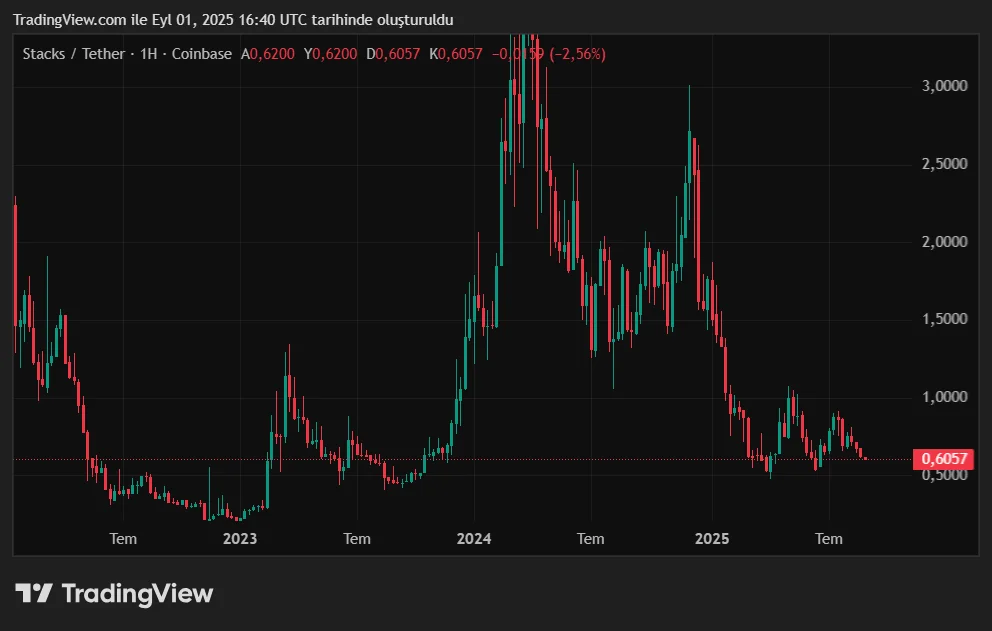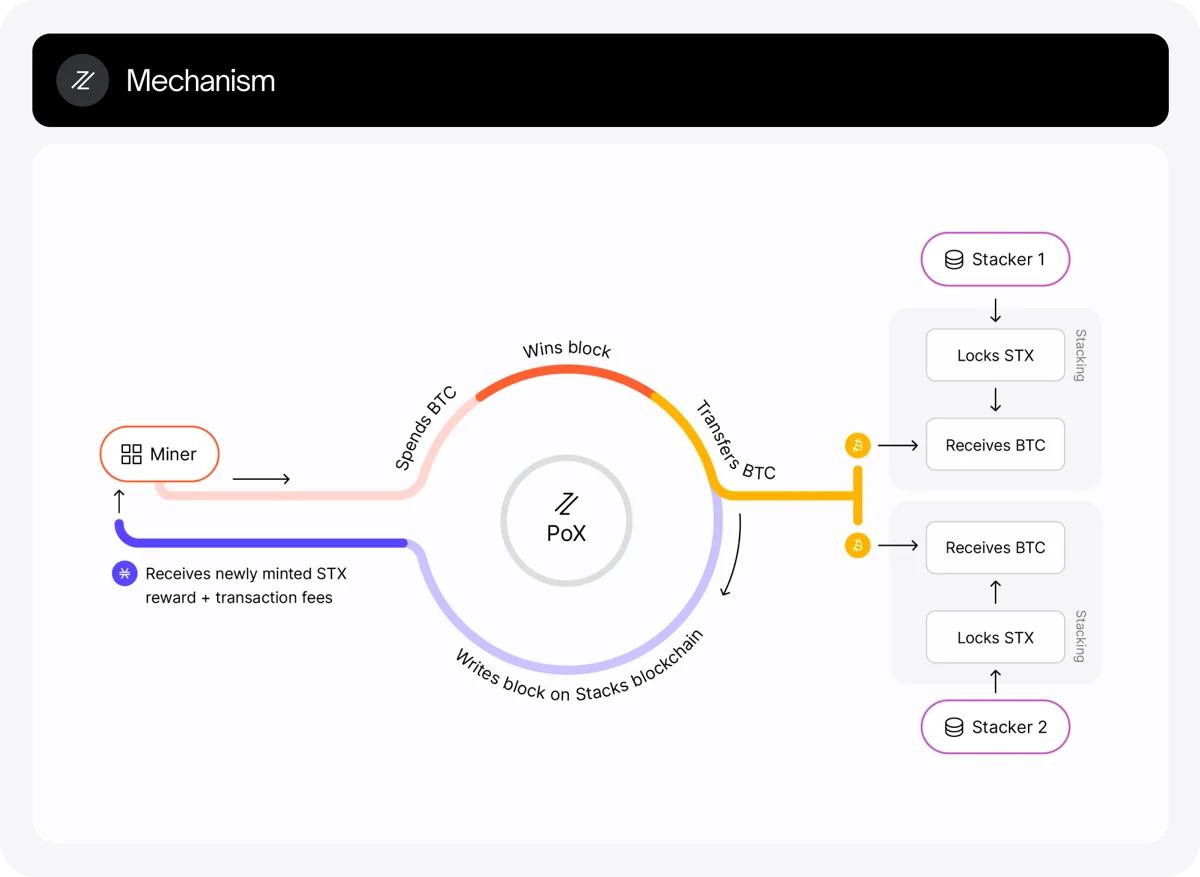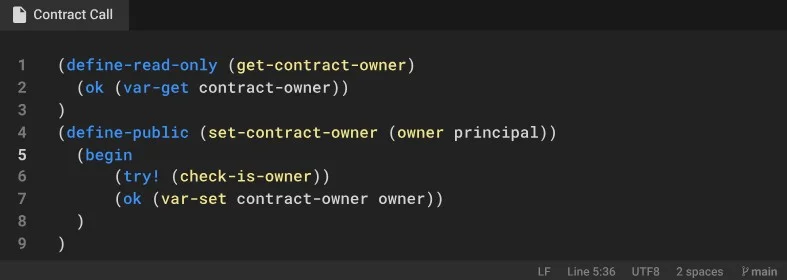In the cryptocurrency world, Bitcoin is often referred to as "digital gold" and is often known only as a store of value or payment method. However, thanks to additional layers built on Bitcoin, the limits of this powerful network can be pushed much further. This is where Stacks comes in. Stacks (STX) is a protocol that enables the development of smart contracts and decentralized applications (dApps) based on the security of the Bitcoin network. Initially announced as Blockstack, the project was renamed Stacks by community decision in 2020 and has since aimed to bring the Web3 vision to Bitcoin. The STX token is at the heart of the network, offering a wide range of uses, from paying transaction fees to participating in governance, earning Bitcoin rewards through stacking, and developing applications. In short, Stacks serves as a bridge developed to transform Bitcoin's robustness into a modern software ecosystem.
This guide covers everything you need to know about Stacks, from its history and technical features to its founders and their role in the ecosystem.
Definition and Origins of Stacks
Stacks is a blockchain protocol that leverages Bitcoin's security to enable next-generation applications. While Bitcoin is a unique network in terms of security, its limitations in smart contracts have paved the way for projects like Stacks. Stacks aims to address this shortcoming and make Bitcoin a more programmable platform. This allows both decentralized finance (DeFi) solutions and Web3 applications to be ported directly to Bitcoin.

The project first emerged in 2013 under the name Blockstack. The Blockstack team's vision was to build an internet where users controlled their own data, eliminating the need for centralized structures. At the time, blockchain technology was still in its early stages, and even Ethereum was just beginning to gain traction. Therefore, Blockstack was born as an academic initiative and progressed in a research laboratory manner. Presentations and published articles supported by institutions like Princeton University provided the project with a scientific basis.
Blockstack made waves with its first whitepaper published in 2017. This document detailed how a software layer built on Bitcoin could function. Around the same time, Blockstack developed the decentralized storage solution Gaia and the identity system, which allowed users to store their identities on the blockchain. These products proved that the project worked not only in theory but also in practice. The community began to grow rapidly during this period, and Blockstack events began to be organized.
2019 was a historic year for Blockstack. The team became the first blockchain startup to hold a public token sale, receiving approval from the U.S. Securities and Exchange Commission (SEC). This sale launched the STX token and attracted investor interest. While regulatory uncertainty was a topic of discussion in the crypto world at the time, Blockstack's compliance with the legal framework generated significant buzz. This step both added credibility to the project and signaled that Stacks would become an attractive infrastructure for institutional investors in the future.
In 2020, the project underwent a significant transformation. Following a community vote, Blockstack's name was changed to "Stacks." Blockstack originated from the idea of a decentralized internet; Stacks, however, focused directly on Bitcoin and evolved into a powerful platform for smart contracts and dApps. During this period, Blockstack PBC, renamed Hiro Systems PBC, continued to provide developers with tools and infrastructure.
Preparations for Stacks 2.0 began around the same time. With this update, which went live in early 2021, the Proof of Transfer (PoX) consensus mechanism was introduced, and smart contracts became writeable using the Clarity programming language. Stacks 2.0 further deepened its integration with Bitcoin and offered STX holders the opportunity to earn Bitcoin rewards by locking their tokens. This was the birth of the mechanism known as "stacking." Thus, Stacks emerged as a unique ecosystem operating with Bitcoin's security, offering programmable rewards, and offering rewards.
In short, the journey that began as Blockstack continues today as Stacks. Initially conceived with the vision of a decentralized internet, the project has evolved into a protocol that builds smart contracts on Bitcoin. Born as a research idea in 2013, Blockstack has achieved a unique position in the crypto world with critical milestones such as the SEC-approved token sale and Stacks 2.0. Today, Stacks is one of the strongest bridges on the path to the Web3 vision by making Bitcoin programmable.
Stacks' History: Key Milestones
Stacks' development process isn't just a name change; it's a major evolutionary story in the blockchain world. What began as a small research project in 2013 has grown over the years, both technically and in terms of community support, transforming it into one of the most important layers of the Bitcoin ecosystem. Below, we'll examine the critical milestones in Stacks' history in chronological order.
- 2013: The Blockstack project was launched by Muneeb Ali and software developer Ryan Shea from Princeton University. The initial goal was to create an internet infrastructure where users could control their data and not be reliant on centralized structures.
- 2017: The project's first whitepaper was published. This step laid out how the Blockstack vision would technically function. Community support grew significantly during this period, and Blockstack began to gain recognition not only in academic circles but also within the crypto community. 2019: Blockstack PBC (now Hiro PBC) made history by holding the first SEC-approved public token sale. This sale, conducted under Reg A+ regulation, officially launched the STX token. This made Blockstack one of the leading projects in the crypto world that operates in compliance with regulations.
- 2020: Following a community vote, the project was rebranded, and the Blockstack name was changed to "Stacks." This change signified not only a name update but also a vision update. The project now became a protocol focused on building smart contracts on Bitcoin.
- 2021: On January 14, 2021, the Stacks 2.0 mainnet was officially launched. This update introduced the Proof of Transfer (PoX) consensus mechanism, introduced the Clarity programming language for developers, and allowed STX holders to earn Bitcoin rewards for staking their tokens. These developments transformed Stacks from a mere vision project into an active ecosystem. 2023–2024: The Ordinals protocol and the NFT wave attracted significant attention in the Bitcoin ecosystem. This period also served as a jumping-off point for Stacks. Bitcoin DeFi applications began to develop on Stacks, particularly with solutions like sBTC, which backs 1:1 Bitcoin, and the ecosystem grew significantly.
- 2025: The Stacks ecosystem experienced a major leap forward. TVL exceeded $100 million, sBTC and STX were migrated to networks like Sui via Wormhole, and developer activity reached a record high. Furthermore, preparations for the Nakamoto upgrade accelerated, the STX Endowment fund was launched, and institutional expansions took place in the Middle East and Asia. As of September 2025, the STX price was around $0.60.

Why Is Stacks Valuable?
Stacks is a pioneering protocol that enables smart contracts on Bitcoin. Its most important feature is its robust security and direct use of Bitcoin's vast ecosystem. All transactions on Stacks are confirmed by being embedded in Bitcoin blocks. This means that an attacker attempting to manipulate the Stacks network would also need to rewrite the Bitcoin chain, which is virtually impossible.
Stacks' security model is based on a unique mechanism called Proof of Transfer (PoX). In this system, miners spend Bitcoin to produce Stacks blocks. A portion of this spent BTC is shared with users who contribute to the network, or "stackers," who lock their STX tokens. This allows both new blocks to be created and Bitcoin rewards to be distributed to those participating in the ecosystem. In other words, STX holders can "stack" their tokens by locking them for a certain period of time and earn BTC directly in return. This feature makes Stacks not only a smart contract platform but also an ecosystem that offers passive income opportunities to its users.

Additionally, Stacks is building a rich Web3 world on Bitcoin. Numerous projects, including wallet applications, NFT platforms, decentralized exchanges (DEXs), and lending and borrowing protocols, run on the Stacks network. Developers can write secure and predictable smart contracts that can read Bitcoin's on-chain state using the specially designed Clarity programming language. One of Stacks' key differentiators is its ability to pave the way for Bitcoin DeFi solutions.
Technical Features
The most striking element of Stacks's technical structure is its Proof of Transfer (PoX) consensus mechanism. In this system, Stacks miners generate blocks by spending Bitcoin, and a portion of the spent BTC is distributed to users (stackers) who lock their STX tokens. Thus, the Stacks network directly leverages Bitcoin's security, and each block is embedded in the Bitcoin chain, providing an additional layer of security.
The network's native token is STX. The total supply is planned to reach approximately 1.818 billion units over time, and this emission process will continue until 2050. The minting of new STX tokens and their reward mechanisms are managed through the PoX system. This allows the supply to expand transparently, based on specific rules.
Stacks blocks operate in sync with Bitcoin blocks. The average block time is approximately 10 minutes because it directly parallels Bitcoin's block time. However, the planned Nakamoto upgrade aims to reduce this time to seconds, making the network significantly faster.
For smart contracts, Stacks uses the specially designed Clarity programming language. Clarity is a decidable language, providing a secure and predictable structure because its outcome is known before execution. Furthermore, thanks to its ability to read the state of the Bitcoin chain, developers can write dApps and smart contracts that interact directly with Bitcoin assets.

Furthermore, the STX token is used to pay transaction fees on the network. It also allows holders to participate in network governance and vote on new proposals. Numerous applications within the Stacks ecosystem, from NFT projects and DeFi protocols to DAO initiatives and decentralized exchanges, operate on the STX token. Thus, Stacks supports a large and vibrant Web3 ecosystem built on Bitcoin.
Who Founded Stacks?
The founders of Stacks are Muneeb Ali, a computer science PhD student at Princeton University, and software developer Ryan Shea. Ali, who recognized the potential of blockchain technology during his academic studies, focused on building new solutions on Bitcoin. Shea contributed his software development experience to the project.
The duo launched a venture called Blockstack in 2013. Initially driven by the vision of building a decentralized internet infrastructure, the team grew the project over the years. In 2020, the name Blockstack was changed to Stacks by community decision.
Today, Stacks' development is driven by a global community rather than a centralized team. This is spearheaded by a company formerly known as Blockstack PBC, which later became Hiro Systems PBC. Hiro provides developers with tools that simplify application development on Stacks and supports the growth of the ecosystem. Thus, Stacks has become a constantly evolving platform, driven by both the founders' vision and the contributions of the open-source community.
Frequently Asked Questions (FAQ)
There are many questions about Stacks. From the project's origins and founders to how it works and the STX token offering, many details remain a source of concern for investors and users. We've prepared answers to frequently asked questions below:
- When did Stacks (STX) come into being?: The foundations of Stacks were originally laid in 2013 under the name Blockstack, but the project's active entry into the crypto market began in 2018. The project entered a completely new era when the Stacks 2.0 mainnet went live on January 14, 2021. Since then, Stacks has become a powerful infrastructure enabling the execution of smart contracts and real-time applications on Bitcoin.
- Who are the founders of Stacks?: The founders of Stacks are Muneeb Ali, a PhD candidate in computer science at Princeton University, and software developer Ryan Shea. The duo launched the project in 2013 under the name Blockstack and, over time, brought their vision for Stacks, focused on Bitcoin, to life. Today, development is led by Hiro Systems PBC and a large open-source community, allowing Stacks to continue to exist as a constantly evolving and growing ecosystem.
- How does Stacks work, and how does it relate to Bitcoin?: While Stacks operates as an independent chain, it has a unique structure that derives its security directly from Bitcoin. Thanks to the Proof of Transfer (PoX) consensus mechanism, miners create Stacks blocks by sending Bitcoin. A portion of spent BTC is distributed to users who lock their STX tokens, ensuring both security and rewarding participants. Ultimately, every transaction made on Stacks is recorded in Bitcoin blocks, ensuring back-to-back verification.
- What is the total supply of STX tokens?: The total supply of STX tokens is capped at approximately 1.818 billion units. According to the emission plan, this supply will be gradually reached by 2050, and new tokens will continue to be minted through the PoX mechanism. Therefore, the amount of STX in circulation will increase in a controlled and predictable manner over the years.
- What is Stacks for, and why are they valuable?: Stacks is a leading protocol that enables the development of smart contracts and decentralized applications on Bitcoin. The project distinguishes itself by leveraging Bitcoin's robust security and offering a unique structure with the PoX mechanism. Furthermore, STX holders can lock their tokens for stacking and earn Bitcoin rewards in return. This has made Stacks a sought-after infrastructure for Web3 projects, NFT platforms, and Bitcoin DeFi applications.
- How can dApps be developed on Bitcoin with Stacks?: Stacks offers developers the specially designed Clarity programming language. Clarity allows developers to read the state of the Bitcoin chain, enabling the writing of secure, predictable smart contracts. As applications run on the Stacks chain, their results are reflected in the Bitcoin network, creating a secure bridge between the two chains. With tools and wallets like Hiro and Xverse, dApp development is becoming more accessible for developers.
For more content on Stacks and Bitcoin-based smart contract projects, follow the JR Kripto Guide series.